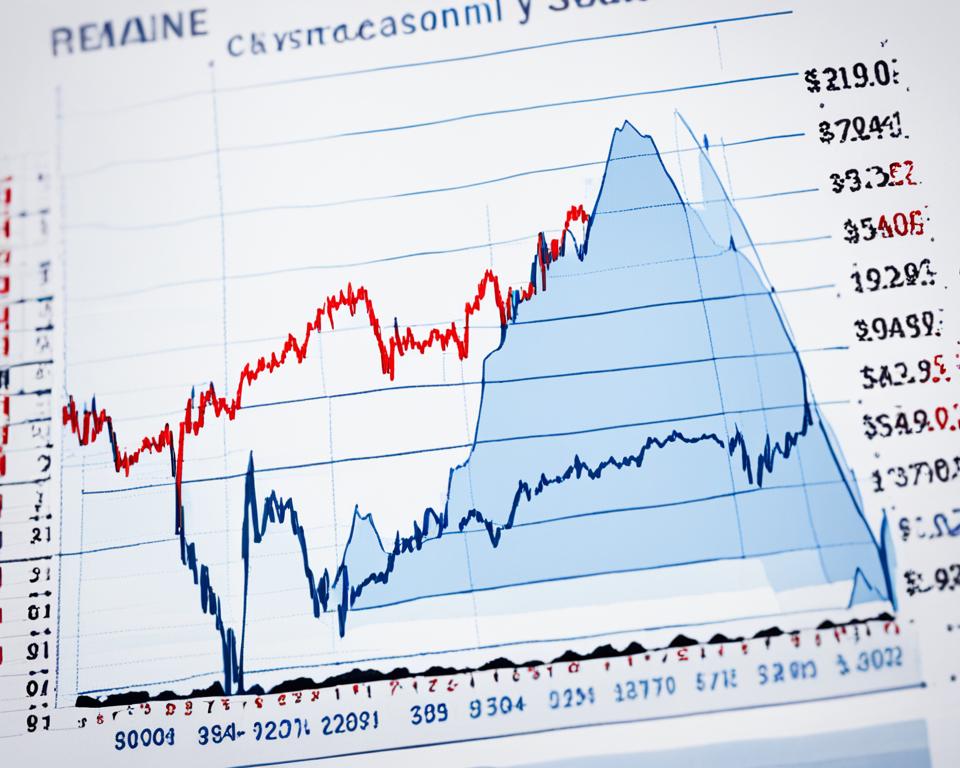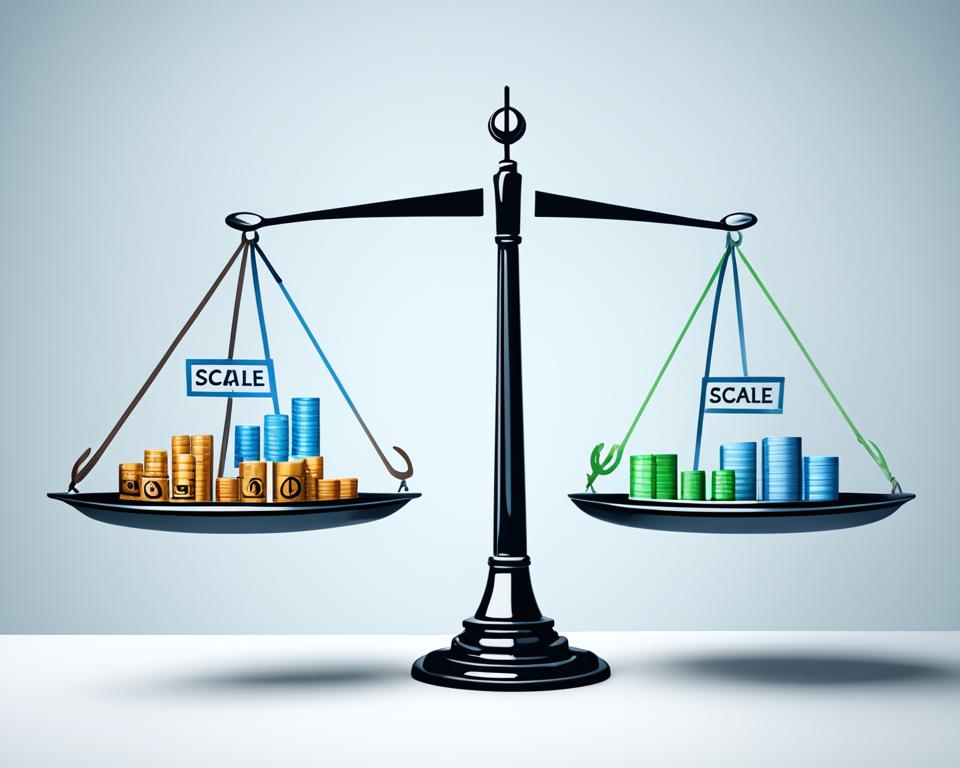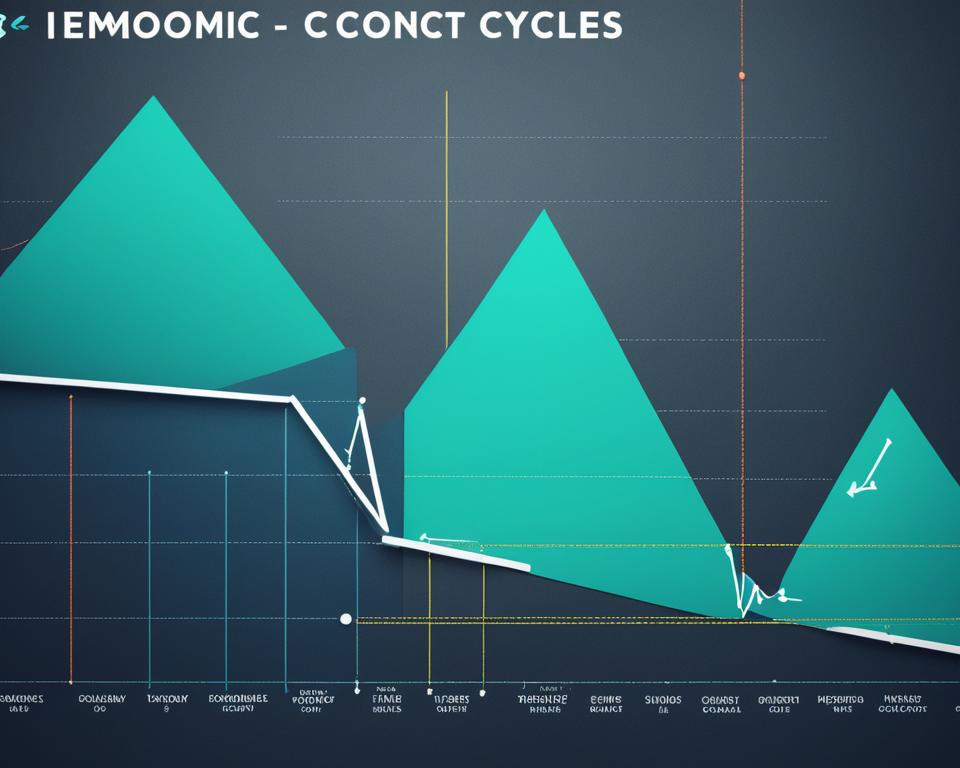Physical Address
304 North Cardinal St.
Dorchester Center, MA 02124
Physical Address
304 North Cardinal St.
Dorchester Center, MA 02124

Understand the difference between cyclical and non-cyclical stocks to make informed investment decisions based on economic cycles and sector performance.
Since 1926, the S&P 500 has seen large changes in stock prices yearly. This shows why it’s key to know the difference between cyclical and non-cyclical stocks. They can greatly change how well your investments do in different economic times.
Cyclical and non-cyclical are terms used to describe a company’s stock price and how it moves with the economy. Cyclical stocks are deeply tied to economic changes. This means when the economy is strong, so are they. On the other hand, non-cyclical stocks do well even when economic growth is slow.
Cyclical stocks are from companies that sell goods people buy more of when the economy is good. Think of luxury items. Non-cyclical stocks come from companies that sell things people always need, like food and clothing. They also sell everyday items like soap and toothpaste. As the economic weather changes, so do cyclical stocks, while non-cyclicals keep earning steadily.
Cyclical companies’s stock prices change a lot with the economy. They do well as the economy grows but not when it’s slow. These include businesses like hotels, airlines, and car makers. When times get tough, people buy these things less. This lowers the money these companies make and their stock price falls.
Non-cyclical stocks are known as consumer staples. They do well even when the economy is shrinking. These are things we always need, like food and energy. Investing in companies that provide these secure goods can help protect you in tough times. For example, we always buy household items like soap, making their companies good investments. Utilities, which provide power and heat, also fit this category.
What sets cyclical and non-cyclical stocks apart is how they do during economic changes. Cyclical stocks do better when the economy is strong but worse when it’s not. Their sizes and the money they pay out can change. On the other hand, non-cyclical stocks stay more stable. The things they sell are always needed, so they don’t change as much. Balancing your investments in both can help you win, no matter the economic condition.
Cyclical stocks relate to goods like cars, luxury items, and fun activities. Automotive industry stocks are a good example, including General Motors and AutoZone. Buying a new car is usually the second biggest expense after a home, and people delay this during tough economic times.
Bank stocks follow the economy’s ups and downs closely. During a recession, their profits drop when people use less banking services and find it hard to pay debts. Capital One Financial and Wells Fargo are examples of these kinds of stocks.
Chip or semiconductor companies also have a pattern. They create chips that don’t last long. This makes them part of the cycle. Qualcomm and Advanced Micro Devices are names you might recognize.
The commercial real estate sector ebbs and flows with the economy. Companies like Brandywine Realty and Empire State Realty Trust are good examples. They see changes depending on the economic situation.
The construction sector depends on trends in buying and renovating homes. This industry goes up and down with the economy. Companies like Caterpillar and D.R. Horton are part of this cycle.
Consumer durable goods are products like home appliances and tech gadgets. Apple and Whirlpool are well-known examples. This sector moves with buying trends in the economy.
Luxury goods makers face challenges when the economy shrinks. People tend to spend less on fancy items then. Brands like Ferrari feel this impact. They are known but can still struggle at these times.
The media and entertainment sector includes companies like Walt Disney and Netflix. They depend a lot on what people choose to spend on entertainment. So, their success can vary.
The mining sector is all about materials like gold. These stocks can do well when the economy is doing badly. That’s because people trust in these materials when everything else seems risky.
While cyclical stocks can be risky, non-cyclical stocks stand out for their steady performance. These stable stocks are called consumer staples. They offer products everyone needs, no matter the economic state.
Food and beverages companies are perfect examples of reliable stocks. Think of brands like Campbell Soup, Coca-Cola, and Kraft Heinz. They’ve shown growth even when the economy shrinks.
The healthcare industry is also considered non-cyclical. Companies such as Procter & Gamble, Johnson & Johnson, and Merck fall in this category. After all, people keep buying healthcare products when they’re not well.
Residential REITs, like Boston Properties, CyrusOne, and Prologis, are non-cyclical. Why? Because people always need homes. This makes them a foundation in the stock market.
Then there are the utility companies. For example, American Water Works and UGI showcase non-cyclical stability. Since people still pay their power and water bills in tough times, these stocks are less affected by economic ups and downs.
When you invest in cyclical stocks, it’s important to understand special indicators. These indicators can show you when to invest. You’ll need to look at things like beta, earnings per share (EPS), and price-to-earnings (P/E) ratio. Cyclical stocks often have high beta values, volatile EPS, and low P/E ratios. This is because their prices and earnings change a lot.
Cyclical stocks’ performance is strongly tied to economic cycles. They usually do well when the economy grows. But they might lose value in tough times. To invest well in cyclical stocks, you need to predict the economy’s future. This can be hard but is vital for success.
To succeed with cyclical stocks, knowing when to buy and sell is key. Keep an eye on economic signs. Then, make changes to your investments as needed. This lets you make the most of cyclical stocks. Also, don’t forget about managing risks well.

Putting money in non-cyclical or defensive stocks is smart for managing risk, especially when the economy is down. These stocks are from areas like healthcare, utilities, and consumer staples. They usually do well even when the economy isn’t. This adds stability and consistent returns to your investment.
Investing in non-cyclical stocks brings a key benefit: consistent stream of dividends. Even when the economy is shaky, companies like those in utilities and consumer staples keep paying out. This is great for people wanting a steady income source from their investments.
Keeping a balanced portfolio is smart. It means mixing both cyclical and non-cyclical stocks. This mix helps lessen the effects of economic changes. Cyclical stocks do well when the economy grows. Non-cyclical stocks offer stability when things go down.
Having both cyclical and non-cyclical stocks spreads out risk. It’s a good way to deal with market ups and downs. You can make money with cyclical stocks in good times. Non-cyclical stocks help protect your money when things are bad.
Investors might also use hedging to balance risk. This involves using options or futures. They can protect against losses. This way, investors can ride out the economy’s up and down cycles better.
| Portfolio Characteristics | Cyclical Stocks | Non-Cyclical Stocks |
|---|---|---|
| Volatility | Generally higher | Generally lower |
| Economic Sensitivity | Highly sensitive to economic cycles | Less sensitive to economic cycles |
| Dividend Payments | Tend to have lower and more variable dividends | Tend to have higher and more consistent dividends |
| Recommended Example Stocks | Costco, Expedia, UPS, Airbnb, Kohl’s | Walmart, Coca-Cola, Procter & Gamble |

The performance of cyclical and non-cyclical stocks depends on the broader economic cycles. These cycles include times of growth, peak, decline, and low point. When the economy is growing, cyclical stocks do well. This is because people spend more and companies are very busy. On the other hand, when the economy slows down, non-cyclical stocks may perform better. That’s because they sell things people always need, no matter what the economy is like. It’s key for investors to know this. It helps them make smart choices about their money in different economic times.

In good economic times, cyclical stocks see more demand and make more profit. This makes their stock prices go up. But in bad times, like an economic downturn, these stocks can fall in value. Non-cyclical stocks, which sell everyday items or offer essential services, are more stable. They can protect investors when the economy is not doing well.
It’s very important for investors to understand how economic cycles and stock market performance are connected. By including both cyclical and non-cyclical stocks in their portfolios, investors are ready. They can earn from the growth of cyclical stocks in good times. Yet, they still have stability from non-cyclical stocks in tough times.
Investors can manage risk by regularly investing. This means putting a fixed amount into stocks often, no matter the current price. This method, called dollar-cost averaging, smooths price changes over time. It can lessen the impact of market volatility and shifts in the economy.
Financial advisors offer valuable help in managing risk. They can guide investors on both cyclical and non-cyclical stocks. A financial advisor will work with you to create a unique investment strategy. They’ll help you know how much risk you can take and use strategies to protect your investments from economic changes.
Knowing the difference between cyclical and non-cyclical stocks is key for good investing. Cyclical stocks do well when the economy is up but struggle when it’s down. On the other hand, non-cyclical stocks keep steady no matter what the economy is doing. Mixing both in your investments and getting advice helps manage risks and keeps your finances healthy.
Distinguishing between cyclical and non-cyclical stocks is crucial for smart investing. Stocks like cars, home building, and fashion do great in good times but can be risky. Essential products, like food and household items, offer steady growth even in tough times.
A mix of cyclical and non-cyclical stocks in your portfolio can protect you from ups and downs in the economy. By staying informed, using strategies to hedge risks, and getting expert advice, you can make the most of investing in the stock market. This approach helps take advantage of opportunities while safeguarding your investments.